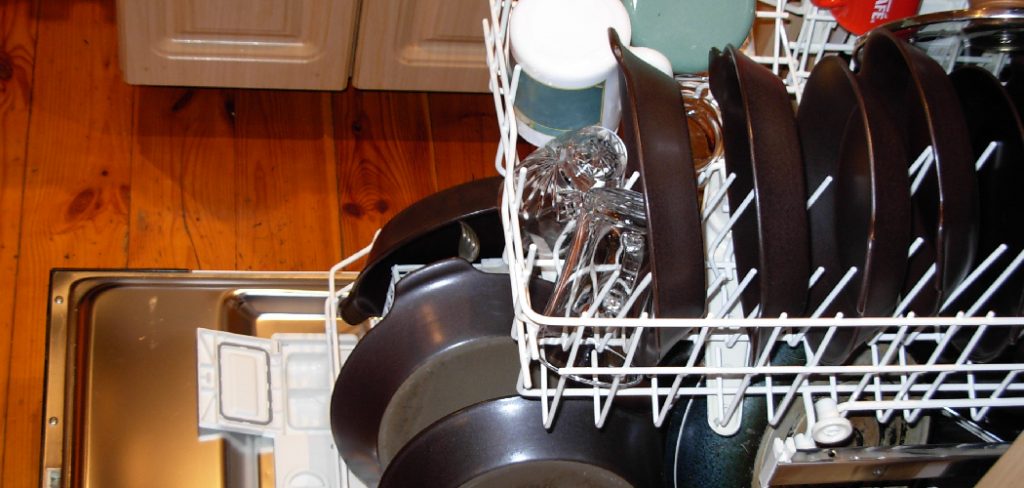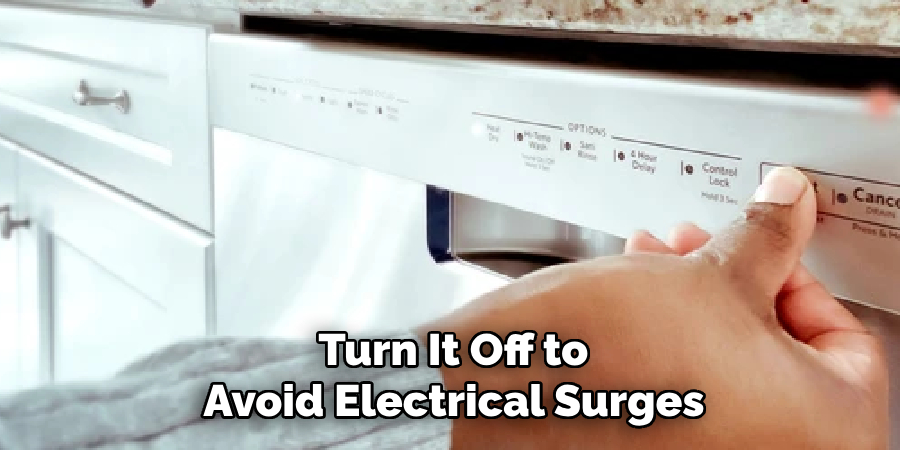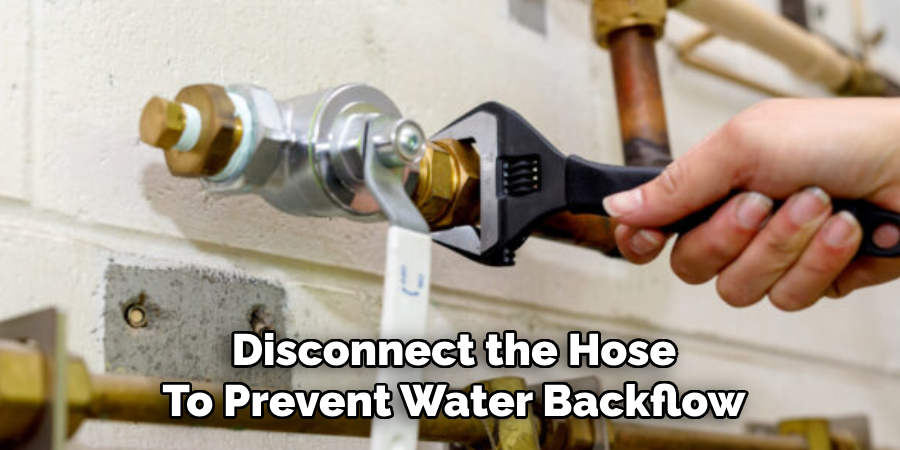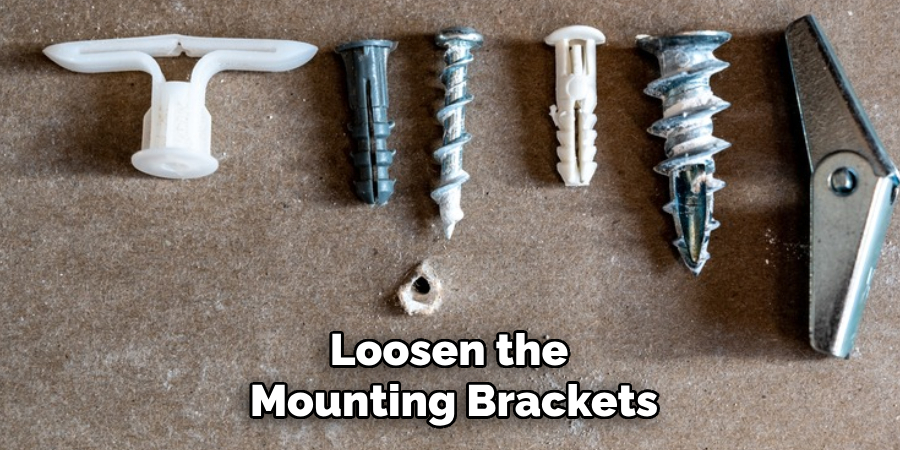Unplugging a dishwasher might seem like a daunting task, especially if you’re unfamiliar with how it is connected. However, with the right approach and a few simple steps, you can safely and efficiently disconnect your dishwasher. Whether you’re preparing for repairs, replacement, or moving the appliance, understanding the process ensures you avoid any potential damage or hazards. This guide will walk you through how to unplug dishwasher with ease.

Why You Might Need to Unplug Your Dishwasher
There are several reasons why you might need to unplug your dishwasher. One common scenario is when the appliance requires repairs or maintenance. Disconnecting it from the power source ensures your safety and allows for troubleshooting or fixing issues without the risk of electric shock. Another reason could be replacing the dishwasher with a newer model—properly unplugging the old unit is necessary for the installation process. Additionally, you might need to unplug the dishwasher when relocating it to a new home or rearranging your kitchen layout. Lastly, if you’re experiencing issues such as malfunctioning controls or unusual noises, unplugging the dishwasher can help reset its system and potentially resolve minor glitches.
Tools and Supplies Needed
Before you begin unplugging your dishwasher, it’s essential to gather the necessary tools and supplies to ensure a smooth and safe process. Here’s a list of items you might need:
- Screwdriver (Phillips or flathead, depending on the screws used for securing panels or brackets)
- Bucket or Towel (to catch or clean up any water that may spill during the process)
- Work Gloves (to protect your hands from sharp edges or debris)
- Adjustable Wrench (for disconnecting water supply lines, if necessary)
- Flashlight (to illuminate dark or hard-to-reach areas behind or underneath the dishwasher)
- Owner’s Manual (to reference specific guidance or diagrams for your dishwasher model)
Having these tools and supplies readily available will help make the task efficient and prevent unnecessary delays or complications.
10 Methods How to Unplug Dishwasher
1. Turn Off the Dishwasher
Before unplugging a dishwasher, it is crucial to turn it off to avoid electrical surges and malfunctions. Press the power button on the dishwasher’s control panel to shut it down. If your dishwasher does not have a power button, ensure it is not running a cycle before proceeding.
Shutting off the dishwasher prevents accidental electrical discharge when you unplug the appliance. Additionally, waiting for a minute after turning it off allows the system to reset before further disconnection.

2. Locate the Power Source
Most dishwashers are hardwired into the home’s electrical system or plugged into an outlet under the sink. Before unplugging, determine the type of power connection your dishwasher has.
Plug-in dishwashers: These dishwashers have a visible power cord that plugs into a standard electrical outlet.
Hardwired dishwashers: These are connected directly to the electrical system through a junction box, requiring extra steps for disconnection.
If your dishwasher is plugged into an outlet, unplugging it is as simple as removing the plug from the socket. If it is hardwired, proceed to the next steps for safe disconnection.
3. Shut Off Power at the Circuit Breaker
If your dishwasher is hardwired into your home’s electrical system, you cannot simply unplug it. Instead, you must turn off the power at the circuit breaker.
Locate your home’s electrical panel and find the circuit labeled “dishwasher” or “kitchen appliances.” Switch the breaker to the “OFF” position. This ensures that no electricity flows to the dishwasher while you work on disconnecting it.
To confirm that the power is off, try turning the dishwasher on—if it does not respond, you have successfully shut off the power.
4. Unplug the Dishwasher from the Electrical Outlet
If your dishwasher has a power cord plugged into an outlet, you can now safely unplug it. Locate the outlet under the sink or behind the appliance, grasp the plug firmly, and pull it straight out.
Avoid yanking the cord, as this can damage the wiring inside. If the plug is difficult to remove, gently wiggle it while pulling. Once unplugged, secure the cord so that it does not get tangled or wet during further disconnection steps.
5. Shut Off the Water Supply
Before moving or fully disconnecting the dishwasher, turn off the water supply to prevent leaks. The shut-off valve is usually located under the kitchen sink, connected to the hot water line.
Turn the valve clockwise until it stops to cut off the water supply. If your dishwasher does not have a dedicated shut-off valve, you may need to turn off the home’s main water supply temporarily.

6. Disconnect the Water Inlet Hose
Once the water supply is off, locate the water inlet hose that connects the dishwasher to the water supply valve. This hose is typically made of braided metal or plastic tubing and is secured with a nut.
Use an adjustable wrench to loosen the nut and detach the hose from the valve. Have a towel or bucket ready to catch any remaining water in the line. If the hose is clogged or damaged, consider replacing it before reconnecting the dishwasher.
7. Remove the Drain Hose from the Sink or Garbage Disposal
The drain hose carries wastewater from the dishwasher to the sink’s plumbing or garbage disposal. Before unplugging the dishwasher, you must disconnect this hose to prevent water backflow.
If the hose is connected to the sink drain, loosen the clamp securing it and pull the hose free.
If attached to a garbage disposal, remove the hose by loosening the clamp and gently twisting it off.
Inspect the hose for blockages or buildup, as food debris can accumulate over time. If needed, flush the hose with warm water and vinegar to clear any obstructions.

8. Loosen the Mounting Brackets
Most dishwashers are secured to the underside of the kitchen counter with mounting brackets to prevent movement. To unplug and move the appliance, these brackets must be loosened.
Open the dishwasher door and look for the screws at the top or sides of the appliance. Use a screwdriver to carefully remove the screws holding the brackets in place. Keep the screws in a small container to avoid losing them if you plan to reinstall the dishwasher later.

9. Carefully Pull Out the Dishwasher
Now that the dishwasher is unplugged, the hoses are disconnected, and the mounting brackets are loosened, the appliance is ready to be moved.
Gently slide the dishwasher out from under the countertop, pulling evenly to avoid straining the remaining connections. If the appliance is stuck, check for any remaining screws or clamps securing it in place.
Be mindful of the power cord, water hose, and drain hose as you pull the dishwasher out. If you plan to store the dishwasher, coil the hoses neatly to prevent damage.
10. Inspect and Store the Power Cord and Hoses
Once the dishwasher is fully unplugged and removed, take a moment to inspect the power cord, water inlet hose, and drain hose for any signs of wear or damage.
- If you plan to reinstall the dishwasher later, wrap the power cord securely and keep the hoses in a dry, safe place.
- If you are replacing the dishwasher, check if the power cord is detachable, as some dishwashers require a separate cord when installing a new unit.
Properly storing the disconnected parts will make reinstallation or disposal much easier.
Conclusion
Unplugging a dishwasher is more than just pulling the plug—it involves turning off the power, disconnecting water and drain hoses, loosening mounting brackets, and carefully moving the appliance. Whether you are performing maintenance, replacing your dishwasher, or relocating it, following these 10 methods ensures a safe and efficient process. By taking the necessary precautions, you can avoid electrical hazards, water leaks, and potential damage to your dishwasher or kitchen.
Professional Focus
Angela Ervin, a former interior designer turned blogger, specializes in kitchen design and renovations. Through her website, she blends her passion for cooking with design expertise, sharing practical and creative ideas. Known for balancing functionality and beauty, Angela’s insightful content has made her a trusted voice in home design and lifestyle.
About the Author
Angela Ervin, an experienced interior designer and blogger, combines her passion for kitchen renovations with storytelling. Living in Petersburg with her family, she enjoys cooking and testing her projects firsthand. Known for her humor and relatable style, Angela shares creative, functional design insights through her content, making her a trusted voice in home design.
Education History
University: Virginia Commonwealth University
Degree: Bachelor of Fine Arts (BFA) in Interior Design
- Angela’s education at VCU focused on mastering core interior design principles, including spatial planning, color theory, materials selection, and sustainable design practices.
- She gained hands-on experience through studio projects and collaborative design exercises, which honed her ability to create functional and aesthetically pleasing environments.
- Her coursework also emphasized problem-solving and practical applications of design, preparing her for real-world projects like her self-directed kitchen renovations.
- The program’s strong foundation in both technical skills and creative expression shaped Angela’s ability to seamlessly integrate form and function in her work.
